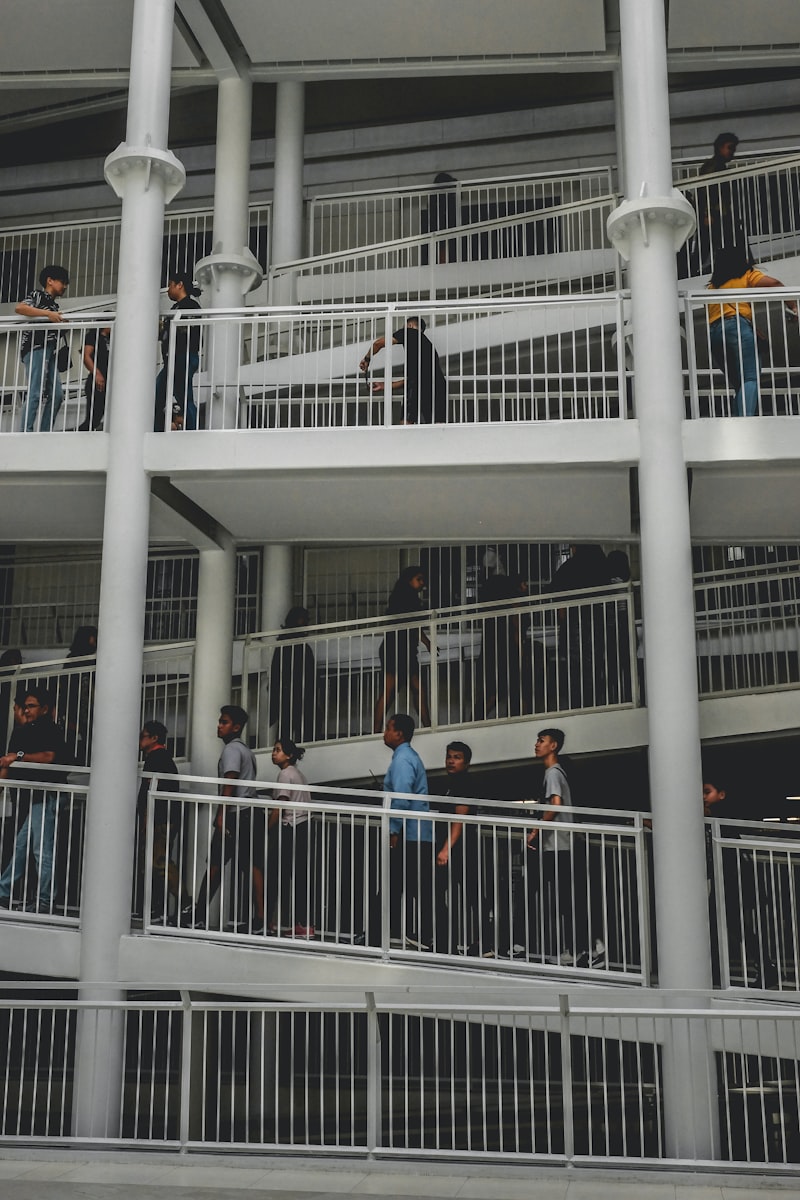Manila, the bustling metropolis known for its vibrant energy and rich cultural tapestry, holds a significant position as the capital city of the Philippines. Nestled on the eastern shores of Manila Bay, this captivating urban center serves as the heart and nerve center of the archipelago nation. With its fusion of historical landmarks, modern infrastructure, and warm hospitality, Manila is truly a city that never fails to leave visitors in awe.
As the capital of the Philippines, Manila boasts an intriguing blend of old-world charm and contemporary dynamism. The city’s historical roots can be traced back to its Spanish colonial past, evident in iconic sites such as Intramuros, a walled citadel built during the Spanish era. Exploring its narrow cobblestone streets, one can delve into the city’s history and admire well-preserved structures like Fort Santiago and San Agustin Church, both recognized as UNESCO World Heritage Sites.
Beyond its historical allure, Manila is also a thriving cosmopolitan hub that represents the country’s progress and development. Skyscrapers dot the skyline, housing corporate headquarters, commercial centers, and residential complexes. The Makati Central Business District stands as a testament to the city’s economic prowess, with gleaming towers and bustling streets showcasing the vibrancy of the local business community.
One cannot discuss Manila without mentioning its vibrant culture and warm-hearted people. The city embraces diversity, offering a myriad of experiences for everyone. From savoring delectable Filipino cuisine to immersing oneself in traditional festivities like the Sinulog Festival or the Pahiyas Festival, Manila is a melting pot of traditions and celebrations.
Manila, the capital city of the Philippines, is a captivating destination that combines history, progress, and warm hospitality. Whether you’re strolling through the ancient walls of Intramuros, admiring the modern skyline, or indulging in the local culture, Manila promises an unforgettable experience. This dynamic city truly embodies the spirit of the Philippines and leaves a lasting impression on all who visit.
Unveiling the Pearl of the Orient: Why Manila Shines as the Capital City
Manila, the Pearl of the Orient, radiates with an unparalleled charm that captivates visitors from around the world. As the capital city of the Philippines, it embraces a rich history, vibrant culture, and breathtaking landscapes, making it a shining gem in Southeast Asia. Let’s delve into the reasons why Manila stands out as a remarkable destination.
One of Manila’s most prominent features is its historical significance. The city boasts a tapestry of Spanish colonial architecture, showcasing structures like Intramuros, a walled city filled with cobblestone streets and ancient churches. Stepping into this well-preserved enclave feels like traveling back in time, immersing oneself in the city’s past.

Beyond its historical allure, Manila pulsates with an energetic urban lifestyle. Makati, the central business district, symbolizes the city’s economic prowess, housing towering skyscrapers, high-end malls, and bustling nightlife. The city’s commercial hubs are abuzz with activity, offering a myriad of shopping, dining, and entertainment options.
Manila also reveals its cultural soul through its diverse neighborhoods. Chinatown, known as Binondo, exudes a lively atmosphere with its bustling markets and mouth-watering street food. Little Tokyo in Makati invites visitors to savor authentic Japanese cuisine and soak in the ambiance of a traditional Japanese enclave. These distinct districts showcase Manila’s multicultural fabric and offer an array of experiences for every taste.
For nature enthusiasts, Manila delivers breathtaking natural beauty within easy reach. Rizal Park, a verdant oasis in the heart of the city, provides respite from the urban hustle and bustle. With lush gardens, serene lagoons, and iconic statues, it offers a tranquil escape where one can reconnect with nature.
Moreover, Manila serves as a gateway to paradise. Just a short distance away lie pristine beaches, such as Boracay and Palawan, renowned for their crystalline waters and powdery white sand. These idyllic destinations allow visitors to unwind and experience the epitome of tropical bliss.
Manila shines brightly as the capital city of the Philippines. Its rich history, vibrant culture, urban dynamism, and natural wonders come together harmoniously, creating an unforgettable tapestry that leaves visitors in awe. Whether you seek historical immersion, cosmopolitan delights, or natural beauty, Manila unveils itself as a radiant gem that promises an enchanting journey through the Pearl of the Orient.
From Spanish Colonization to Modern Metropolis: Manila’s Journey as the Capital of the Philippines
Manila, the vibrant capital of the Philippines, has come a long way on its journey from Spanish colonization to becoming a modern metropolis. Its rich history and cultural heritage make it an intriguing city with endless stories to tell.
In the 16th century, Spanish conquistadors arrived in Manila and established it as a center for trade and commerce. The city became the seat of political power and the hub of religious influence in the archipelago. As the Spaniards ruled over the Philippines for more than three centuries, their imprint can still be seen in the city’s architecture, cuisine, and traditions.
Over time, Manila transformed into a melting pot of cultures, blending Spanish, Chinese, American, and indigenous influences. This amalgamation gave birth to a unique Filipino identity that is proudly showcased in the city’s diverse arts, festivals, and traditions.
The 20th century brought significant changes to Manila. In 1946, the Philippines gained independence from the United States, marking a new chapter in the city’s history. Rapid urbanization and population growth propelled Manila into a bustling metropolis, with towering skyscrapers and modern infrastructure shaping its skyline.
Despite the challenges of rapid development and urban sprawl, Manila remains a city of contrasts. Historical landmarks like Intramuros, the walled city built during the Spanish era, stand in juxtaposition with modern shopping malls and high-rise buildings. This contrast creates a captivating blend that tells the story of Manila’s evolution.
Today, Manila is a thriving hub of business, entertainment, and culture. It boasts world-class museums, art galleries, and theaters that showcase the talents of Filipino artists and performers. The city’s culinary scene is equally diverse, offering a delectable array of flavors that reflect its multicultural heritage.
As Manila continues to evolve, it faces the inevitable challenge of preserving its rich history while embracing progress. Efforts are being made to restore and protect historical sites, ensuring that future generations can appreciate the city’s heritage.
From its humble beginnings as a Spanish colony to its current status as a modern metropolis, Manila’s journey is a testament to the resilience and adaptability of its people. As the capital of the Philippines, it stands as a symbol of the nation’s past, present, and future, inviting visitors to explore its captivating blend of old and new.
Manila: The Cultural Heart of Southeast Asia and Capital of a Vibrant Nation

Have you ever wondered where the beating heart of Southeast Asia lies? Look no further than Manila, the bustling capital of the Philippines. Situated on the eastern shores of Manila Bay, this vibrant city offers a mesmerizing blend of history, culture, and modernity that will leave you in awe.
When it comes to cultural experiences, Manila is an absolute treasure trove. Immerse yourself in the rich tapestry of Philippine history at the Intramuros, the walled city that stands as a testament to the country’s colonial past. Stroll along its cobblestone streets and marvel at the well-preserved Spanish-era architecture. Step inside the majestic Manila Cathedral, a symbol of the enduring faith of the Filipino people.
But Manila isn’t just about history—it is also a hub of artistic expression. Visit the Cultural Center of the Philippines, where you can catch awe-inspiring performances ranging from classical concerts to contemporary dance shows. Explore the National Museum of the Philippines and discover a vast collection of art, artifacts, and archaeological treasures that showcase the nation’s diverse heritage.
In addition to its cultural significance, Manila is a city that never sleeps. Dive into the vibrant street food scene, where the aroma of sizzling skewers and savory delicacies fills the air. Indulge your taste buds with mouthwatering dishes like adobo, sinigang, and halo-halo. From traditional eateries to trendy cafes, Manila offers a culinary adventure like no other.
Beyond its urban charms, Manila boasts stunning natural landscapes waiting to be explored. Take a trip to Rizal Park, a sprawling oasis in the heart of the city, where you can relax amidst lush greenery and iconic landmarks. For a quick escape from the hustle and bustle, head to nearby destinations like Tagaytay or Batangas, where you can bask in the beauty of Taal Volcano and pristine beaches.
Manila truly encapsulates the essence of Southeast Asia—a dynamic fusion of tradition and modernity, a city pulsating with energy and creativity. It is a cultural melting pot where history intertwines with contemporary flair. So, whether you’re a history enthusiast, a food lover, or an art aficionado, Manila promises an unforgettable experience that will leave you captivated and yearning for more.
Intrigued? Plan your journey to Manila and immerse yourself in the cultural heart of Southeast Asia. Unleash your wanderlust and embark on an adventure that will ignite your senses and create lasting memories. Manila awaits with open arms—get ready to be enchanted!
Exploring Manila’s Rich History and Heritage as the Capital of the Archipelago
Manila, the bustling capital of the Philippines, is a city that breathes with an awe-inspiring historical legacy. Nestled in the heart of the archipelago, this vibrant metropolis carries within its streets an enchanting blend of past and present. Embark on a journey with me as we delve into Manila’s rich history and heritage, unearthing tales of colonization, resilience, and cultural diversity.
Step foot in Intramuros, the walled city that stands as a testament to Manila’s colonial past. Built during the Spanish era, these ancient walls witnessed centuries of conquests and revolutions. Take a leisurely stroll along cobblestone streets, where you’ll encounter well-preserved Spanish-era architecture, including the iconic San Agustin Church. With its ornate interiors and grand façade, this UNESCO World Heritage Site offers a glimpse into Manila’s Spanish influences.
Beyond the Spanish era, Manila also holds a significant place in the annals of World War II. Visit Rizal Park, named after the country’s national hero, Dr. Jose Rizal. This sprawling green oasis served as the site of his execution, igniting the flames of revolution against Spanish oppression. Today, it stands as a symbol of freedom and nationalism, attracting locals and tourists alike.
Manila’s heritage extends beyond the colonial period, embracing its multicultural roots. Dive into the bustling streets of Binondo, the world’s oldest Chinatown, where Chinese influences intertwine with Filipino culture. Explore vibrant markets, indulge in delectable cuisine, and witness colorful festivals that celebrate the undeniable fusion of cultures.
As the sun sets, immerse yourself in Manila’s vibrant contemporary scene. Head to the Cultural Center of the Philippines, a hub for arts and culture. From theater productions to art exhibits and musical performances, this venue showcases the city’s thriving creative spirit.
Manila’s rich history and heritage offer an immersive experience that captivates all who venture into its streets. From the remnants of Spanish colonization in Intramuros to the pulsating energy of Chinatown and the vibrant contemporary arts scene, this city weaves together a tapestry of captivating stories. Embark on your own Manila adventure and uncover the treasures that lie within this remarkable capital.